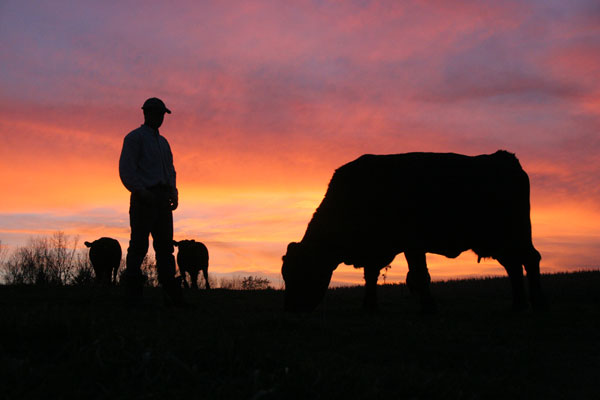Ranching: Is it profitable AND fun?
Today’s management requires a new mindset. Those who are unwilling to change will be left behind.
January 2, 2020

There are numerous articles and information pieces that talk of the advancing age of American farmers and ranchers. There are twice as many over 65 than there are under 45. There also appears to be a declining number of young people who want to return to the ranch on which they grew up. We see estimates that up to 60% of ranches could change hands before 2030. Thus, the question, “From whence comes the next generation of ranch managers?”
There are many reasons that our young people don’t come back. Our kids go to college and get other interests, or they marry someone from the city who can’t or won’t adjust to country life. But one reason stands out to me. If they grew up thinking or hearing that ranching could not be profitable or that it is no fun, why would they want to even think of coming back?
Since the possibility of me going back to the family ranch on which I was raised was not very good at the time I needed to make those decisions, I am very glad that I had been led to think that a ranch could, and should, be profitable; and, for me, it surely had been fun.
Because of that, I combined my early ranch experience with a good college education and a couple of stepping-stone jobs before becoming a general manager of a significant livestock operation. I am sure there are similar opportunities for other young people who are honest, have a good work ethic, and have a good intellect and a passion for the work. If they will then become life-long learners, they can become very successful.
I have long said that it’s a good day when I can let my horse do 75% of my work and 50% of my thinking. It still is; but most of ranch management work and even the economically important day-to-day tasks are done when your horse is in the pasture.
In fact, many good ranches don’t even have a horse. Today’s management requires a new mindset. Those who are unwilling to change will be left behind. The biggest problem most of us have is between our ears.
Often when giving talks, I present a summary slide fairly early in the talk and then spend a lot of time talking about these activities for improving profit. Here is the slide:
To manage for profit:
Reduce overheads as much as possible.
Achieve excellent cow herd reproduction.
Market well.
Reduce acres per cow.
Increase cows per FTE (full time equivalent in labor).
Reduce fed feed vs. grazed feed.
I further suggest for wise expenditure of time, effort and money, you become a systems thinker. That will help you see the interconnectedness of these economically important pieces.
When considering this as one “whole” or a single complex, integrated system, I am always led to our stewardship over our land and livestock and the importance of making a profit.
In recent months I have written about breeding cows to fit the environment and our management. Cows and other livestock are an important and integral part of the entire system. They are an important part of a complex system that can be managed to greatly improve ecosystem functions and the soil.
In addition to what we already know about soil erosion and depletion, other things are apparent. When cheap nitrogen became available at the end of World War II, soils had become depleted; so, nitrogen fertilizer had a profound effect on production and became a Band-Aid for depleted soil.
Now fertilizers are expensive and require more sophisticated application and timing techniques, thus reducing their cost-effectiveness. We are also learning that they alter natural soil microbial activity and burn up carbon.
It seems like this is true of many of our inputs like fertilizer, pesticides, herbicides, etc. Their costs increase faster than the value of our products, and they become less effective over time. In the meantime, are they killing beneficial soil micro-organisms?
The biggest causes of soil degradation are forests and rangelands being converted to farmland and overgrazing of rangelands by livestock. The degradation following the conversion is primarily the result of farming and grazing creating:
Much more bare ground
A huge reduction in variety of plants, animals, soil microbes, bugs and birds
Diminished depth of rooting
Fewer functioning roots during a large part of the year
And in many cases, complete removal of grazing animals from the landscapes.
Carbon and organic matter losses, erosion and topsoil loss, desertification, poor water infiltration rates and poor moisture-holding capacity in our soils are all evident in many of our farms and rangeland pastures. These functions along with soil fertility were all maintained on the prairies, in forests and on rangelands for thousands (millions) of years.
Why? How? Why not now? Many farmers and ranchers are learning good farming and grazing methods. They are demonstrating that the functions of healthy soils can be restored, and soil can be built much faster than we ever thought possible.
This reversal of soil health doesn’t just happen. It requires changes in the way we farm and in the way we manage livestock grazing. To have adapted and productive livestock and to use farming and grazing methods is a challenge that can result in profitable operations and a lot of “fun” for young, aspiring managers—including those not raised on a farm or ranch.
Teichert, a consultant on strategic planning for ranches, retired in 2010 as vice president and general manager of AgReserves, Inc. He resides in Orem, Utah. Contact him at [email protected].
About the Author(s)
You May Also Like


.png?width=300&auto=webp&quality=80&disable=upscale)
